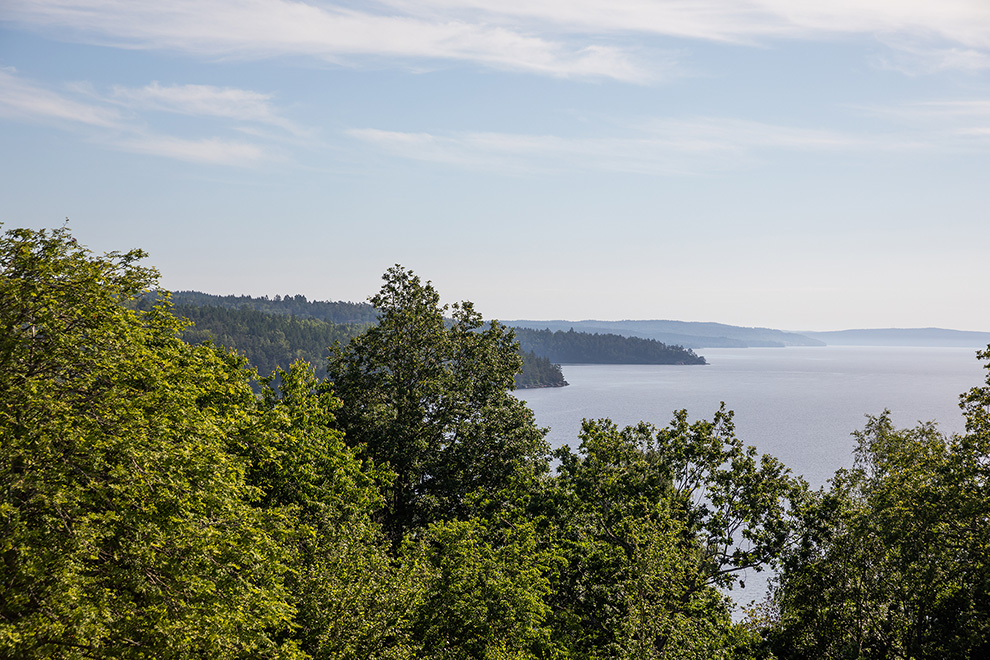How we work for the sustainable use of the sea, lakes, watercourses and fish
Our fundamental mission, according to our instruction from the government, includes the conservation, restoration and sustainable use of lakes, watercourses, the sea and fish resources.

Several of the 16 environmental quality objectives adopted by the Riksdag have a direct connection to water – Flourishing Lakes and Streams; A Balanced Marine Environment, Flourishing Coastal Areas and Archipelagos; Zero Eutrophication; Natural Acidification Only; A Non-Toxic Environment; Good Quality Groundwater; A Rich Diversity of Plant and Animal Life; and Thriving Wetlands. SwAM has been specifically designated follow-up responsibility for the first three.
Broad collaboration
To achieve the environmental quality objectives, we have an extensive toolbox at our disposal. In order to achieve efficient, ecosystem-based management of marine resources, we focus on working with a broad perspective and broad collaboration, both internally and with external partners. Marine planning is one of the basic tools. In December 2019, we submitted a proposal for marine plans – for the Gulf of Bothnia, the Baltic Sea and the Skagerrak and Kattegat – to the government. Briefly, we can say that we are showing how the sea can be used efficiently and sustainably, now and in the future. In concrete terms, this may be about where offshore wind turbines should be located, where electric cables can be laid and how commercial fishing can be developed. We have placed great emphasis on the interests of total defence.
The EU framework is the basis
The EU Marine Strategy Framework Directive is a cornerstone for the work of marine management. The EU's common framework for the marine environment covers marine waters from the coast to the outermost border of the economic zone. The main focus is that the marine environment in Europe is a valuable heritage that must be protected and preserved.
Water status is classified
Another tool is water management, which is about improving our water and creating long-term, sustainable management of our water resources. Water management covers lakes, watercourses, coastal and transitional waters and groundwater. Water is reviewed and its status classified in the database VISS (Water Information Systems Sweden).
Protecting endangered species
Fisheries management is another basic tool. We are responsible for national regulations for fishing in the sea (largely EU-regulated) and in the five large lakes, as well as in the watercourses that flow into them up to the first barrier to migration. The aim is to protect endangered species, preserve genetic variety, maintain ecosystem services and ensure that naturally occurring fish species can continue to maintain viable populations. Every year, in collaboration with the Swedish University of Agricultural Sciences (SLU), we publish a report that gives an overall picture of how our most commercially important fish and shellfish are doing.
Responsible for fisheries control
Fisheries control is a neighbouring area of activity. This involves overall responsibility for implementing EU fisheries control in Sweden. This means that we are responsible for controlling the fish caught, landed, imported, exported, transported and sold in Sweden.
The fishing of the future
What should the future of professional and leisure fishing and aquaculture look like? Together with the Swedish Board of Agriculture, we are developing a common strategy, on behalf of the government. In this context, environmental ambitions must be reconciled with fish stocks and the requirements of the fishing industry.

Global collaboration
Because all the earth's oceans are interconnected, international collaboration is of paramount importance if we are to achieve the global environmental goals. No country can do everything that is needed on its own. SwAM therefore collaborates with a number of organisations and conventions. In addition to HELCOM, OSPAR is an important convention to protect the sensitive environments of the Baltic Sea and the North-East Atlantic. Scientific collaboration occurs within ICES, the International Council for the Exploration of the Sea.
SwAM has a key role
We also collaborate with Sida, Sweden's government agency for development collaboration, within the framework of SwAM's global programme for international development collaboration. We support the Government Offices in a number of regional and global conventions, organisations and processes, such as the Arctic Council, the Convention on Biological Diversity and the Commission for the Conservation of Antarctic Marine Living Resources (CCAMLR). As far as the latter organisation is concerned, Sweden and SwAM have been given a key role in that SwAM's Director General Jakob Granit has assumed the role of chair of the commission with effect from November 2020.
UN's goals are the starting point
Through Agenda 2030, the countries of the world have committed themselves, from 1 January 2016 to 2030, to ensuring lasting protection for the planet and its natural resources. In addition to the environmental goals of the Agenda, a number of human rights goals are also included.
The starting point for our international work is the UN sustainable development goals, Sweden's global development policy (PGU) and the generation goal in the work on the Swedish environmental objectives.



